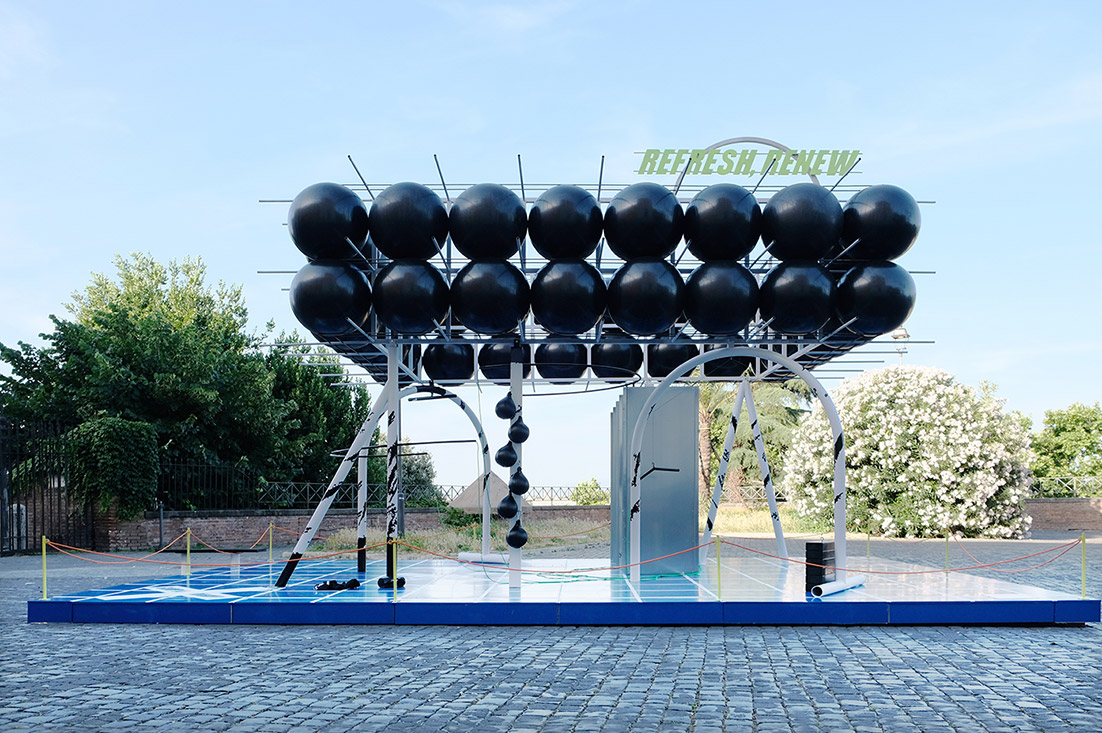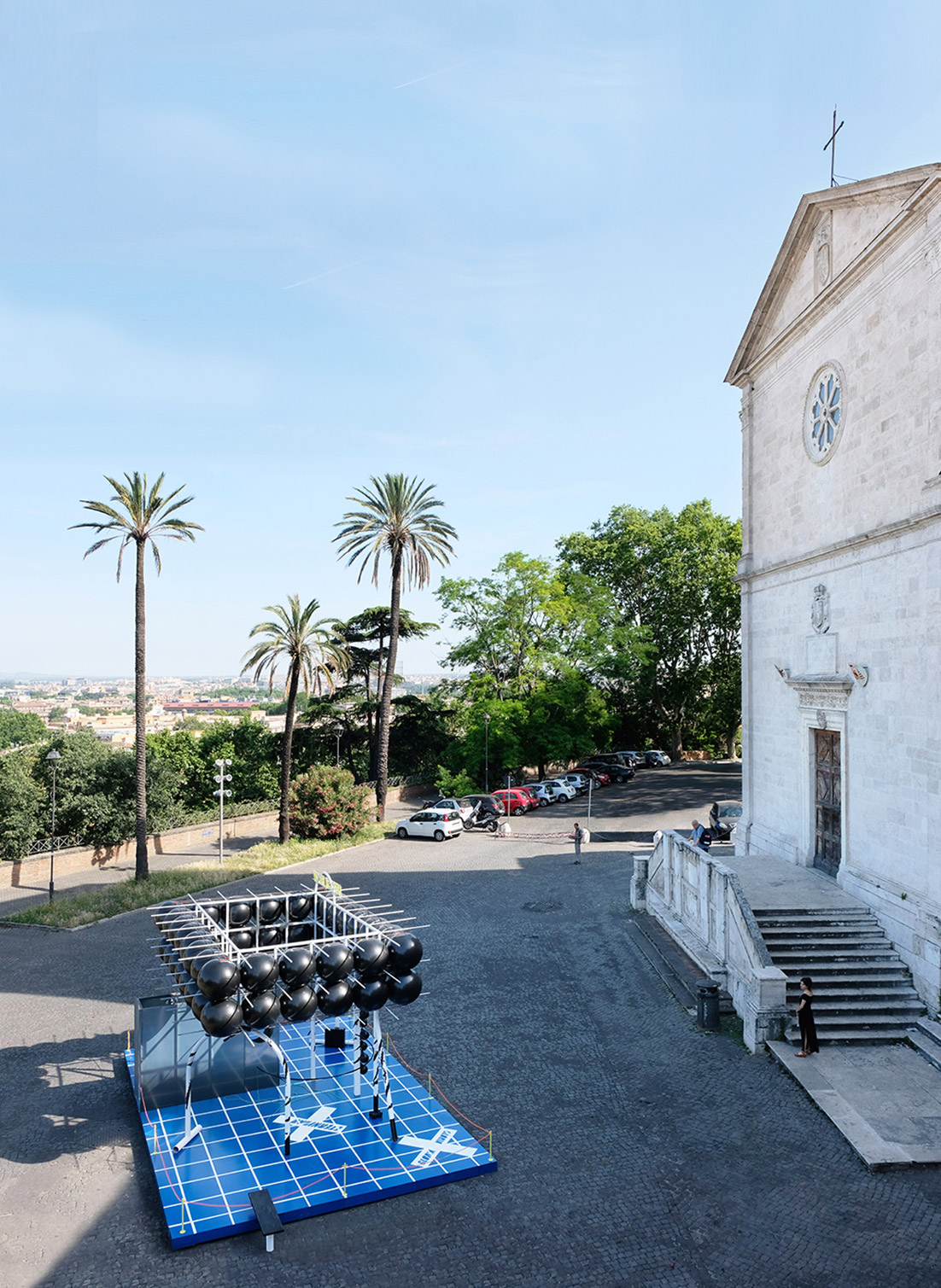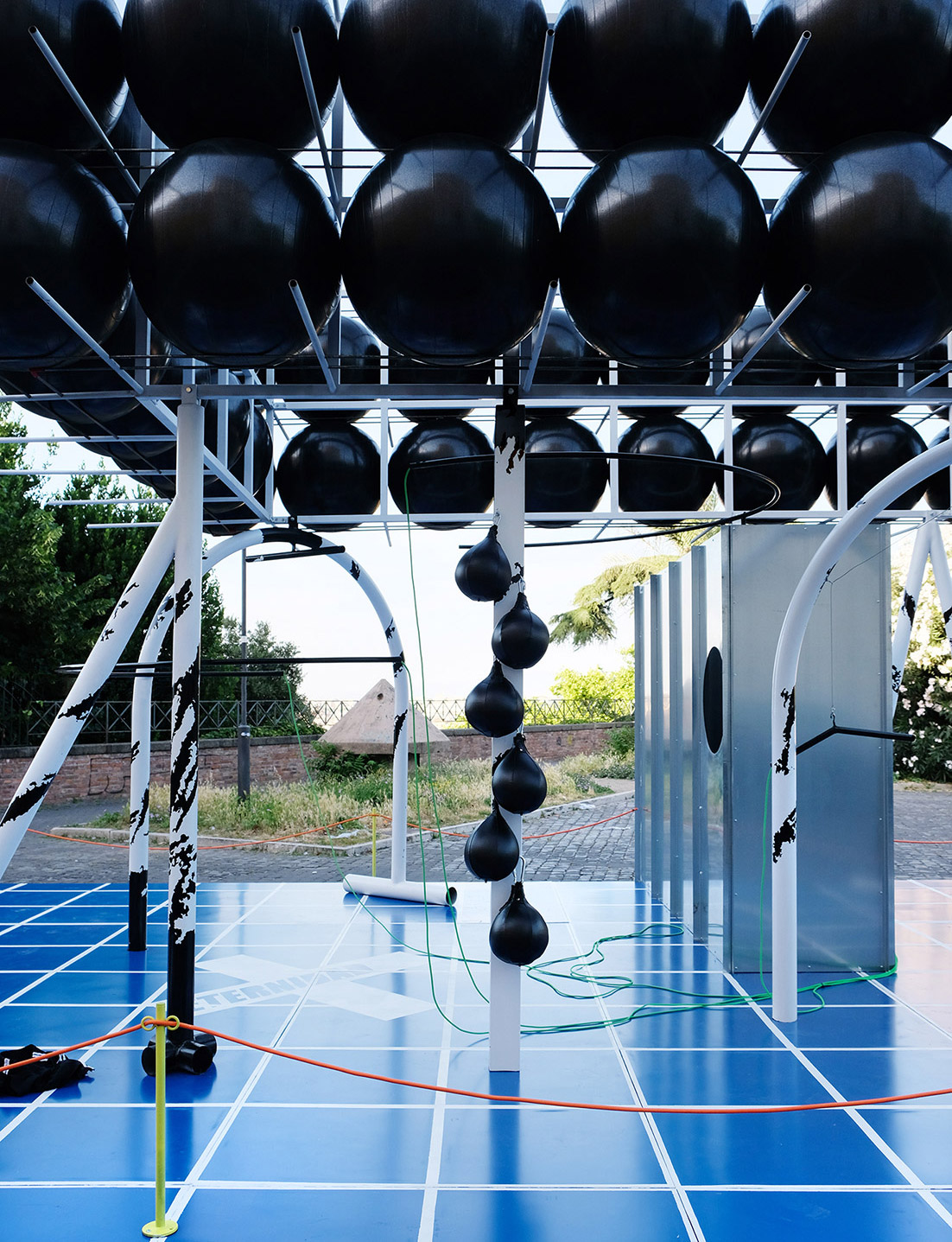
16.12.19 - Common Accounts builds a funerary fitness pavilion in Rome
Common Accounts, the office of Igor Bragado and Daniels Faculty sessional lecturer Miles Gertler, had a busy summer in Italy. There, under the auspices of Bragado's fellowship at the Spanish Academy in Rome, they built an unusual pavilion with a roof made of black yoga balls. The intent? To connect the culture of fitness with the rituals of funerals and death.
"The project of self-design has always been central to our office's research," Gertler says. "Understood on a spectrum, architectures of fitness and death both address the construction and deconstruction of the body. The gym and the funeral are fundamentally linked to the design of the human in material terms. The contemporary representation of ourselves online demonstrates a desire to produce and memorialize ritual at the scale of the everyday. This pavilion provides a platform for that.”
The pavilion consists of a smooth aluminum floor, covered with athletic-looking graphics. Up above is some equipment: weights, bars, and a set of black punching bags. The structure is wrapped in a black-and-white print that is actually an enlarged photo of a piece of raw meat. ("Taken from Stamo Papadaki’s unused cover for Sigfried Giedion's book Mechanization Takes Command," Gertler says.) The whole thing is topped off with the black yoga balls and a giant-sized slogan that hints at physical and spiritual rebirth: "REFRESH, RENEW."
A set of silver cabinets houses a rack of servers that are intended to store selfies and videos of visitors to the pavilion, creating space for a sort of virtual afterlife archive within the structure.
Bragado and Gertler refer to the pavilion as a "catafalque for the digital age." (A catafalque is a type of funeral structure that can be used as a platform for a coffin, but is also sometimes used as a substitute for the actual body of the deceased.) They were inspired by the catafalque for Philip IV of Spain, a 17th-century structure that was inscribed with geographic features from the Spanish territories.
"We were interested in architecture that would similarly account for disparate or remote territories," Gertler says. "In this case, data and the body online, and images of the body sublimated to server space."
The pavilion stood in the Piazza San Pietro in Montorio, in Rome, for two months this summer. It's expected to tour other cities in 2020. Here are a few more photos:




